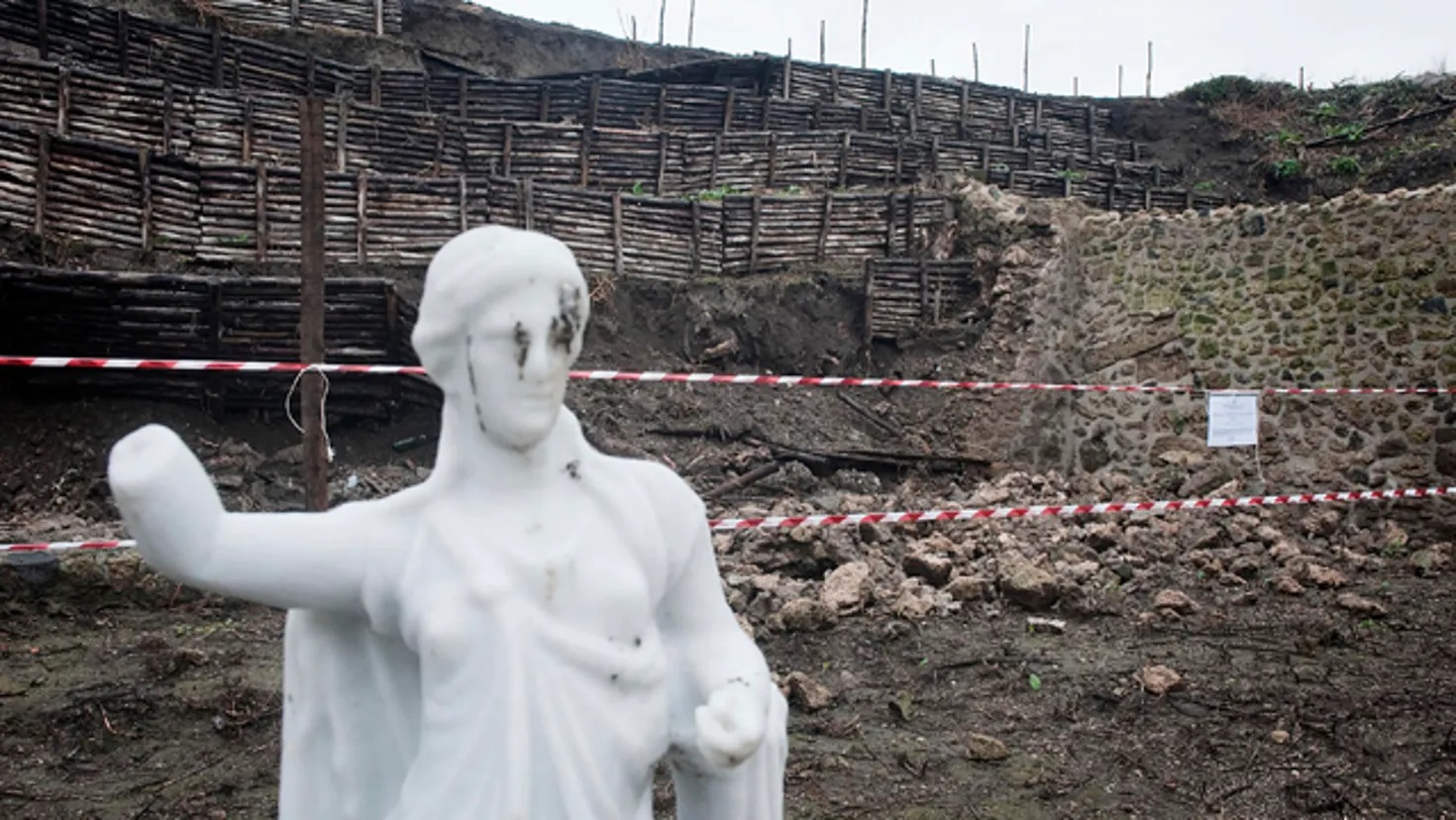Archaeology Treasure Pompeii Continues Collapse

Nov. 30, 2010: A stretch of garden wall ringing an ancient house in Pompeii that gave way after days of torrential rain is cordoned-off. Officials said an inspection found that a 40-foot-long section of wall forming part of the perimeter of a garden area near the House of the Moralist gave way in several points. (AP Photo/Salvatore Laporta)

ROME – Two more walls have given way inside Pompeii’s 2,000-year-old archaeological site, officials said Wednesday, reporting the second collapse in as many days.
Officials sought to play down the latest collapses, saying they only concerned the upper parts of two walls of no artistic value. But the repeated damage at one of the world’s most popular archaeological sites is proving an embarrassment for Italy, and giving credence to accusations that the area is in a state of decay.
The two walls collapsed early Wednesday morning, likely as a result of heavy rains over the past several days, the office of Pompeii’s archaeological superintendent said. One collapse concerned the 2-meter by 3-meter (6.5- by 9.8-foot) upper chunk of a partition wall between two buildings, located along the central Via Stabiana.
Also giving way nearby was the upper part of a wall of an ancient house known as the “small Lupanare.” The name usually refers to a brothel, although this was a small house off-limits to tourists, and not the vast “Lupanare” brothel famous for its erotic frescoes that is one of the main attractions at Pompeii, which is near Naples.
Neither of the collapsed walls featured frescoes, officials said. The area has been cordoned off as cultural officials review the damage.
“These kind of events are possible over the course of the life of a 2,000-year-old, vast archaeological site,” said superintendent Jeannette Papadopoulos, seeking to play down the incidents. “They should not give rise to alarmism.”
Still, Culture Minister Sandro Bondi has been criticized since the collapse last month of the Schola Armaturarum, a frescoed house where gladiators prepared for combat. Then on Tuesday, a stretch of garden wall ringing the ancient House of the Moralist gave way, intensifying calls for action.
Bondi, a close ally of conservative Premier Silvio Berlusconi, faces a no-confidence motion in parliament, which was proposed by opposition parties in the wake of the gladiator house’s collapse. The date has not been set.
Recently, other collapses have plagued Italy’s vast cultural heritage, including at Nero’s Golden Palace in Rome and at the Colosseum, where three chunks of mortar broke off months ago.
Bondi has denied responsibility, saying in an interview published Wednesday that between September 2003 and February 2010 there have been 16 collapses at Pompeii.
“As you can see, collapses don’t just take place when the right is in charge,” Bondi told Corriere della Sera. Bondi also said he had called a meeting with regional officials to look at ways to better preserve the site, including possibly with private funding.
Some 3 million people every year visit the ancient ruins of Pompeii, once a busy Roman city that was destroyed in A.D. 79 by an eruption of Mount Vesuvius. The eruption killed thousands and buried the city in 6 meters (20 feet) of volcanic ash, providing priceless information on what life was like in the ancient world.




